A common complaint about Christopher Nolan’s films (often heard in critical circles) is that they are unemotional puzzle boxes—despite dazzling the senses and bewildering the mind, there is no deeper significance or interest to their hyper-intellectualized set-pieces. Put differently, they’re like $200 million Sudoku puzzles: engaging distractions, but distractions nonetheless.
I think this perspective overlooks something crucial about Nolan’s films. Yes, they are grounded in an often-bewildering array of rules that require immense amounts of exposition to explain, exposition that often takes precedent over developing characters and relationships that would normally take center stage in even a blockbuster film. But the centrality of these rules is absolutely essential to Nolan’s films, for they define the bounds his characters are struggling to break free from.
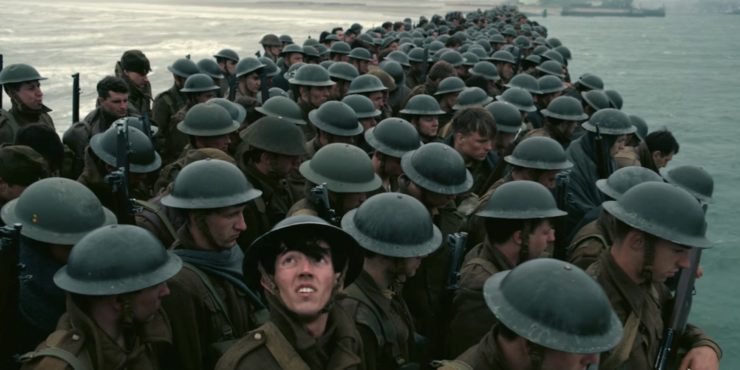
This explains why time is such a central character in Nolan’s films: time is often the central problem Nolan’s characters are struggling to overcome. Take Dunkirk, for instance, which never shows the faces of the German soldiers surrounding the British trapped on the beach; as an enemy, they take a backseat to time, which is foregrounded in the film’s unusual narrative structure and Hans Zimmer’s metronomic score, and provides the impetus for every piece of action in the film. But it’s not just time. The struggles of Nolan’s characters are often internal and universal. They grapple with who they are and their purpose, dividing or deceiving themselves in the pursuit of becoming someone else (Memento, The Dark Knight trilogy, The Prestige); they seek refuge from guilt and responsibility by losing themselves in work (Insomnia, Inception); and they strive for reconciliation in the face of inevitable loss (Interstellar, Tenet).
The conflict in each of these films is deeper and more significant than the one between their primary protagonists and antagonists. The conflict is existential, between us and the world in which we find ourselves. None of us are Batman, but we all have to come to terms with the laws governing embodied beings and the demands we place on one another. In Nolan films, characters find reconciliation by confronting these constraints, which are both a source of conflict and the grounds for its resolution.
Consider a pivotal scene in Interstellar (2014), where Matthew McConaughey’s character Cooper realizes, while watching video diaries beamed from home, that an hour spent near a black hole has dilated time for him so dramatically that his children are now fully grown and have children of their own. Cooper knowingly left his children in order to save them, but until that moment did not fully appreciate the gravity of his choice.
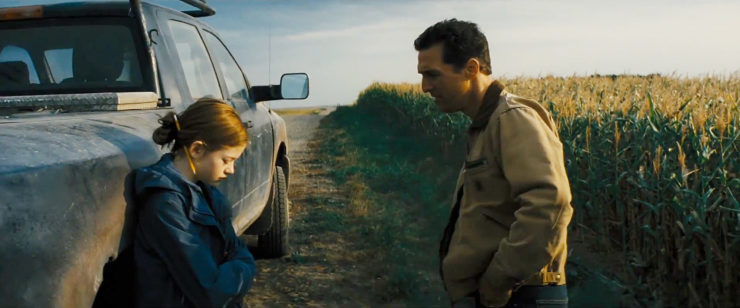
Confronted with the loss of his children—and he has lost them, since by the time he sees his daughter Murph again, she will be on her deathbed—Cooper pleads desperately with the laws of physics: “Is there any possibility… some kind of a way we can maybe all jump in a black hole? Gain back the years?” he asks his crewmate Brandt (Anne Hathaway), who issues the harsh truth: “Time is relative, okay? It can stretch and it can squeeze, but… it can’t run backwards. It just can’t.” But Cooper is undeterred and pilots his ship into a black hole that leads him into a four-dimensional representation of his daughter’s bedroom from years before, where he sets in motion this own journey to save humanity.
Cooper’s story in Interstellar is a closed causal loop that represents one of Nolan’s many strange solutions to his/our conflicts with the bounds of existence. While in the tesseract, Cooper is, in a sense, outside of time—time appears to him as just another spatial dimension which he can interact with by moving from room to room. As such, Cooper is able to extend his causal reach into the past, thus becoming the source of the evidence (the coordinates for NASA) that motivates past Cooper to take up his mission, which leads to him eventually to give his past self that very evidence.

This might seem paradoxical, but it isn’t. Objectively, the effects of later Cooper’s gravitational manipulations lie not to the future, but the past. The effect of Cooper receiving the coordinates happens before its cause (Cooper’s gravitational manipulations). Still, Cooper perceives cause as preceding effect. His experience in the tesseract is ours as well—we witness him first place his hand in the falling sand, which then causes the particles move to accommodate it, thus creating the pattern on the floor of his daughter’s bedroom. He is dynamically causing the past to have been the way it was. It’s a beautiful scene, the emotional counterpoint to Cooper’s experience watching his children age years over a few minutes of videotape.
And yet, Cooper’s aim of reconciling his conflicting obligations as a parent is only partially fulfilled—a harsh reminder of the limitations Cooper is struggling against. By the time he is positioned to gravitationally communicate with his past self and daughter, he has already (in the objective sense) done so. His actions are at that point necessary in light of the effects they have already brought about, and he can’t just jump back to a time and place he never was. Though afforded a chance to be with his daughter again, everything now must play out according to a script—Cooper cannot change what’s already happened; he can only play his role now in bringing about what’s already happened.
What’s happened’s happened. That’s a mantra repeated throughout Tenet (2020), by Robert Pattinson’s character Neil. In Tenet, Nolan takes the idea of backward causation to further conceptual extremes, by way of a fictionalized technology that can invert the local entropy of objects, allowing their causal effects to run backwards relative to the global direction of time, all while interacting with objects moving forwards in time.

Inversion presents a different way to break free from the forward march of time, to bend the rules of nature to our whim. A parent who missed the birth of his child because he was filming a movie might invert himself to an earlier time, un-invert, and then be present to welcome them into the world. At the time of his child’s birth, there would be two spatially disconnected instances of the same person—one who hasn’t yet inverted on the film set, and a second, reliving the same moment again, this time with his newborn. But while the inverting parent gains time in a sense—he gains the ability to be in two places at the same time—he doesn’t gain time in another sense. The length of his life will always be measured by the ticks of his own personal clock, which continues in the same direction whether he is inverted or not.¹ As before, the fantastical attempt to break free from natural law is only partially successful.
Things are different in Inception (2010), Nolan’s film about dream thieves tasked with invading the mind of a business tycoon to place an idea in his subconscious. In Inception, shared dreaming allows for one to literally extend one’s life by playing out entire alternate lives within interactive dreams that last mere hours of real time. To new parents like Cobb and Mal (Leonardo DiCaprio and Marion Cotillard), or perhaps Christopher Nolan and his wife Emma Thomas, such technology affords opportunities of escaping into brief moments of shared dreaming that provides a tempting reprieve from newfound responsibilities—the chance to continue projects from their previous, childless, lives.
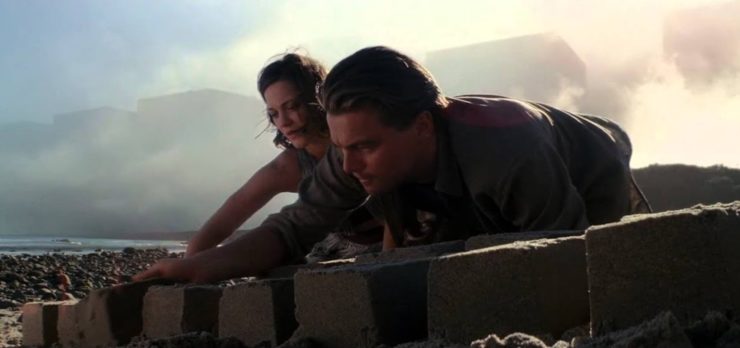
And yet, such escape comes with a cost: how could one not feel some degree of guilt about having, and indulging, the desire to be free from your children? We later learn that Cobb and Mal spent an entire lifetime growing old together in a deeply layered shared dream; and that, upon waking, each was wracked with guilt and doubt about what they had done. Mal’s suicide and Cobb’s subsequent banishment from his children sets in motion the plot of the film, though it is perhaps also the manifestation of a guilty conscience trying to come to terms with itself. The personal parallels with Nolan’s own struggles are striking: although the ideas behind Inception had occupied his mind for years, the film’s emotional core only came together for Nolan after making The Dark Knight, a shoot which kept him away from his kids for long stretches of time and almost prevented him from being present for the birth of his fourth child.
If Inception is Nolan’s distillation of the guilt felt by many new parents who still long for aspects of their lives before children, Interstellar might be an attempt to work through the moral quandaries of parenting adolescent children (the next phase of a parent’s life cycle, as it were). Whereas Cobb’s guilt was over not being there for his children, the central question in Interstellar is about how to be there for your children.
In pivotal moments, both Cooper and Dr. Brandt (the lead NASA scientist, played by Michael Caine) deceive their daughters in pursuit of what they think is the greater good. Faced with a likely suicide mission that is his daughter’s only chance at survival, Cooper lets her believe that he fully expects to return, preserving her hope for a positive outcome in the face of mounting evidence to the contrary. And Brandt similarly withholds from his daughter (Cooper’s crewmate, the other Dr. Brandt) his inability to solve the gravity equation necessary to save the planet so that she will embark on a colonization mission to continue the human race.
Despite reasonable motivations, both deceptions enact a significant toll on the fathers. Cooper is consumed with regret when he learns that his daughter, Murph, is now fully grown and resents him for deceiving her about the possibility of his return. And Dr. Brandt’s deathbed confession to Murph plays like that of a man asking for forgiveness in his last moments to save his soul.
Thus, Nolan’s characters are, like us, subject to natural constraints as well as categorical moral demands. Neither are escapable: as embodied temporal beings, we are embedded in the flow of time, and as persons, parents, friends, colleagues, and so on, we are embedded in networks of personal responsibility. When our demands conflict, the best we can hope for is forgiveness and understanding.
At the end of Interstellar, the expected triumphant reunion between Cooper and his daughter Murph turns out to be bittersweet. Though Cooper has only been gone for a few years (in his time), Murph is now at the end of her life, surrounded by family who are strangers to Cooper, despite their blood relations. Their relationship has changed completely and, now, their roles are reversed—where before it was a dying Dr. Brandt who pleaded with Murph for forgiveness, now it is Murph who is the dying elder tasked with assuring her younger father that she understands and forgives his earlier deceptions.

This brings us back to Tenet, a film in which an intergenerational conflict threatens to consume the entire planet. In a future described similarly to the one depicted in Interstellar, our descendants face a dying planet. With no resources left in their future, they turn to the past—to us—and, armed with a technology called the Algorithm that can invert the direction of time, plan to use it to secure a future for themselves in their past by consuming their ancestor’s—that is, our—resources.
We are saved by a rogue organization, Tenet, that breaks the Algorithm into pieces and hides them in the past. Our descendants find an ally in a bitter Russian oligarch, Sator (Kenneth Branagh), someone who has been similarly condemned to die (in his case by nuclear radiation) and who thus shares their resentment towards the technological excesses of the late twentieth century. Sator agrees to help them find the hidden pieces of the Algorithm and send it back to them, thus ensuring the destruction of our present to save their future.
Here, the consequences of are actions are zero-sum: our survival means the death of our descendants, and vice versa—the possibility of reconciliation between parent and child is already foreclosed. But, as Neil reminds us about his mantra what’s happened’s happened, it’s “an expression of faith in the mechanics of the world… not an excuse to do nothing.” We still have to act, even knowing the outcome of our actions. In our actual climate crisis, one individual’s actions are not sufficient to prevent catastrophic global warming. But, nonetheless, will each of us be able to look our descendants in the eye and tell them that we did everything we could to prevent their destruction? In the end of the movie, the present is saved, but only after a seductively compelling speech delivered by Sator, which seems to underscore the director’s own ambivalence about the finale.
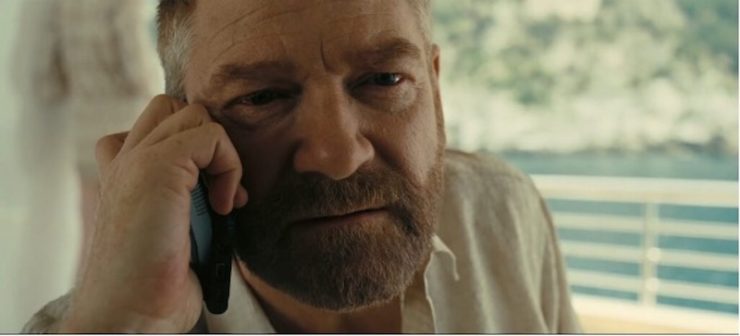
Parenthood enters into Tenet in another, more optimistic way, as well. One of the great joys of the film is watching Neil and The Protagonist (John David Washington) become friends. We learn in the end that Neil has known The Protagonist for much longer, and that for him the end of their friendship is just the beginning for The Protagonist.
In its own way, then, Tenet is the story of an inverted parent-child relationship. From The Protagonist’s perspective, he’s recruited into a shadowy organization, carefully shepherded along by Neil, who patiently allows The Protagonist to blunder his way through missions while keeping mum about their relationship. In this way, Neil acts as a benevolent parent figure to The Protagonist, tasked with withholding information from The Protagonist (citing an organizational policy that “ignorance is our ammunition”) to protect him.
From Neil’s perspective, his first introduction to The Protagonist happens much later in The Protagonist’s life—at the end of the film, we learn that it was The Protagonist who recruited Neil into Tenet and taught him the ways of inversion (all of which happens off screen). From this perspective, their roles are reversed—The Protagonist already knows Neil, and it is he who is forced to remain quiet about how much he knows about Neil’s fate (which lies in The Protagonist’s past).
Each character thus plays the role of mentor/father-figure to the other at different times. Thus understood, Tenet represents aspects of parenting adult children, in particular the often-frustrating transition from caregiver to cared-for, which is marked in some cases by a loss of memory and emotional control, an inversion backwards into a kind of childhood, and, eventually, non-existence.
Watching Tenet for the first time can be frustrating as well, as we try to understand The Protagonist’s motivations. He seems compelled to join Tenet to save the world, yet has no backstory—no family or friends or name, even—and after the first scene, the CIA fakes his death to make him an off-the-books undercover agent—a man without a history, literally. That’s fitting, since his character arc is itself inverted; his backstory, including his recruitment of Neil and work founding Tenet all lies in his future, off screen. Furthermore, like the inverted bullet that seems to fly upwards into the hand that dropped it, The Protagonist is drawn into Tenet by future forces, which perhaps explains why he keeps at his mission despite the mounting evidence that he’s being deceived by everyone around him. In inverted interaction, causality appears reversed to someone moving forwards through time—in this case, that is us, the viewer, and The Protagonist. We are seeing the effects (his being drawn into Tenet) before their causes (his becoming the kind of person who would recruit people, including himself, into Tenet).
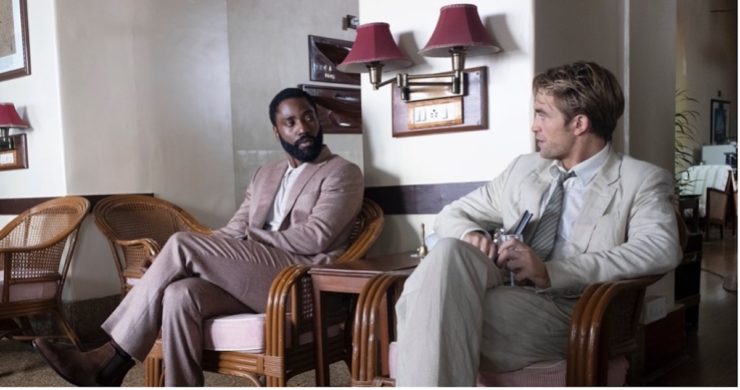
Frustrating though it may be initially, on re-watch the film gives way to a zany, infectious, joy.² It’s only with hindsight that we can see the film through Neil’s eyes, as he’s given the chance to meet his mentor as a young man. No wonder Neil wears such a bemused, nervous, smile on his face during his meeting with The Protagonist in Mumbai—he’s about to befriend the man he has long admired as a father figure for the first time again.
The first time, again. Now that’s a Christopher Nolan tagline, if I’ve ever heard one: it seems innocuous at first, until you think about it, at which point it starts to unravel, and then you watch the movie and realize that it does make sense after all. Like coming to grips with an Escher drawing or a garden path sentence (“The girl told the story cried”), it’s a process of finding your conceptual footing after your orientation in the world has been thrown into chaos.
The problems facing Nolan’s characters are shared by all thinking beings. And each of us must find our own way through them—we have to decide how to spend our limited time, how to be good friends and parents and children, and how to deal with responsibilities and inevitabilities (like disappointing others or dying). In this way, far from being emotionless puzzle boxes, I see Nolan’s films as deeply humanistic, concerned with the kinds of predicaments that unite us as human beings and which force us to reckon with our humanity and our place in the universe.
Of course, there are many ways to watch a movie, and I’m not suggesting that the only way or even the best way to enjoy a Nolan film is through such a humanist perspective. I just think that this lens is often overlooked when it comes to viewing his work, and it is a particularly fruitful one to engage with. That said, what I absolutely love about Nolan’s films is that they contain multitudes, and there are many ways enjoy them. A big reason Nolan is one of my favorite directors working today is that no one better weaves such thematically resonant material into large-scale, big-budget, filmmaking. So whether you go for the braahhhhmms or the mind-bending set-pieces, or to better appreciate the complexities of the human condition, I think visiting, or re-visiting, any of Nolan’s films is a worthwhile endeavor.
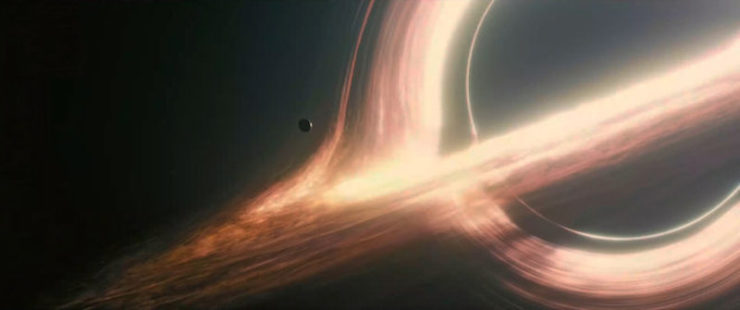
Footnotes:
1. What inversion is is actually not obvious. My own view is that it is a way of inverting the temporal direction of causation. So, an inverted agent’s causal forces tend to propagate to that agent’s objective past, and an inverted object’s effects tend to precede causal forces acting upon it. It would take another article to spell this out more clearly, but we can clarify this just a bit here by way of a 2D spatiotemporal diagram:

Here, the x-axis represents time, and the y-axis collapses the three spatial dimensions into one. An object moving left to right along the x-axis is moving forward through time, meaning its causal forces tend to propagate in that direction. An object moving right to left along the x-axis is moving backwards through time, meaning that its causal forces tend to propagate in that direction. So, an inverted gun fired at t2 will result in a bullet firing at t1.
The film handles inversion by way of turnstiles, which are horseshoe-shaped doors that connect two separate rooms. Here’s a fun question to ponder when thinking about inversion. Sometimes, inversion happens by two instances of a character emerging from the turnstile at the same time, and sometimes, inversion happens by two instances of a character disappearing into a turnstile at the same time. Why is that? Consider the diagram below, which is a visual representation of part of The Protagonist’s journey in Tenet. The Protagonist is represented by the line in the diagram, whose temporal direction is indicated by the direction of the arrows along it:
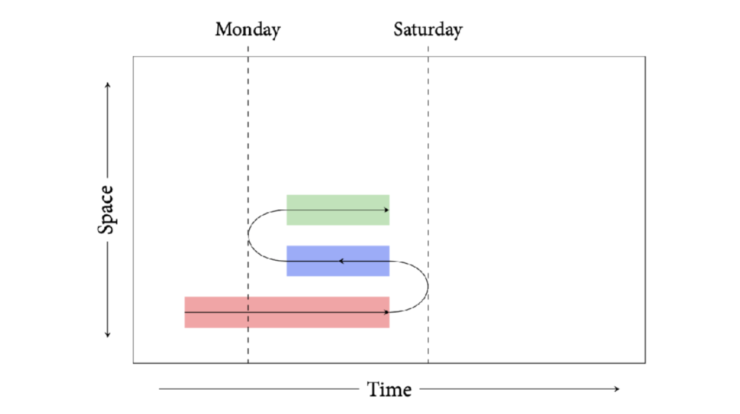
The red part is the first iteration of The Protagonist (moving forward through time), as he enters the turnstile room in the bowels of the Freeport (on Monday, let’s suppose). Suddenly, the turnstile opens and two masked people emerge, one inverted, who fights with The Protagonist, and the other un-inverted, who runs past Neil. We learn later that these two people are both The Protagonist. The reason it seems that two emerge at once can now be understood visually. Right before the dashed line marked “Monday” there is only one person present in the room (the iteration of the Protagonist marked in red). After that line, there are two more. From the “God’s eye view” depicted in the diagram, this is because the inverted Protagonist (highlighted in blue) is making his way back to the turnstile to un-invert, and the un-inverted Protagonist (highlighted in green) is the result of his successfully un-inverting.
Now, consider what happens on Saturday from the perspective of an un-inverted person watching the red iteration of The Protagonist. They watch as two iterations of The Protagonist, one moving forward through time, and one moving backwards, enter the turnstile, and then disappear! Again, the diagram helps to make sense of this: after Saturday, those two individuals are no longer in that spatial location. But from The Protagonist’s perspective, it’s just one unbroken world-line—he enters the turnstile and emerges inverted. Thus, when I talk about two iterations of the same individual, I mean literally that one individual has become spatially scattered, not that one has become two. Again, there’s a lot more to say about this (including what happens when inverted and un-inverted individuals causally interact, and whether it’s possible to invert the global direction of time and what that would look like), but let’s not get bogged down in the nitty gritty details.
2. A point noticed in the “Tenet is about bros who love each other” defense of the film; cf. this tweet by Emily St. James and this series of YouTube videos.
Justin Khoo is an Associate Professor of Philosophy at MIT, where he spends most of his time thinking about the nature of language and logic. He loves watching movies and sometimes talks about them on a podcast (Cows in the Field). His (still unfulfilled) childhood dream was to publish a fantasy novel with Tor.










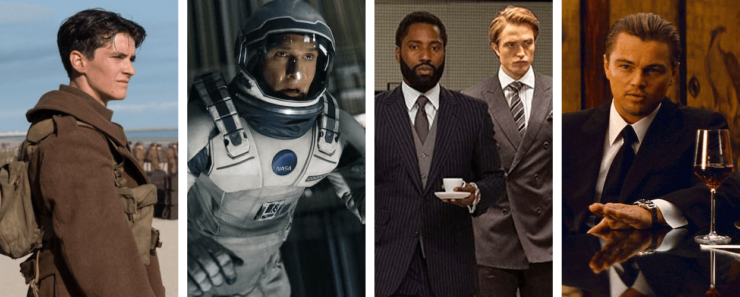
My wife and I watched Tenet independently, originally (I work an ocean away from home!), but when I got home next we got hold of the DVD and watched it four or five times more. I’m still not sure I got it, but I know I love it :)
I’ve always loved Nolan’s films, no matter how complicated- that’s much of the charm. I just wish they passed the Bechdel test once in a while. That’s what makes him hard to love at times. Same with Ridley Scott for me though at least he has some strong women in there and has improved somewhat over time. Also, Nolan’s batman stuff was both great and some right wing propaganda though all batman is kind of right wing propaganda so perhaps that’s not his fault.
I read the screenplay for Tenet prior to watching the film and that gave me greater understanding to piecing together the timelines events that were happening as I watched.
I find it funny that the critics complain about Nolan’s films for the things that make them excellent examples of the type of science fiction that by necessity must be exposition heavy. They’re complex, and that’s what’s great about them. Not all science fiction movies should be space operas.
I was disappointed that there was no actual sudoku in this article.